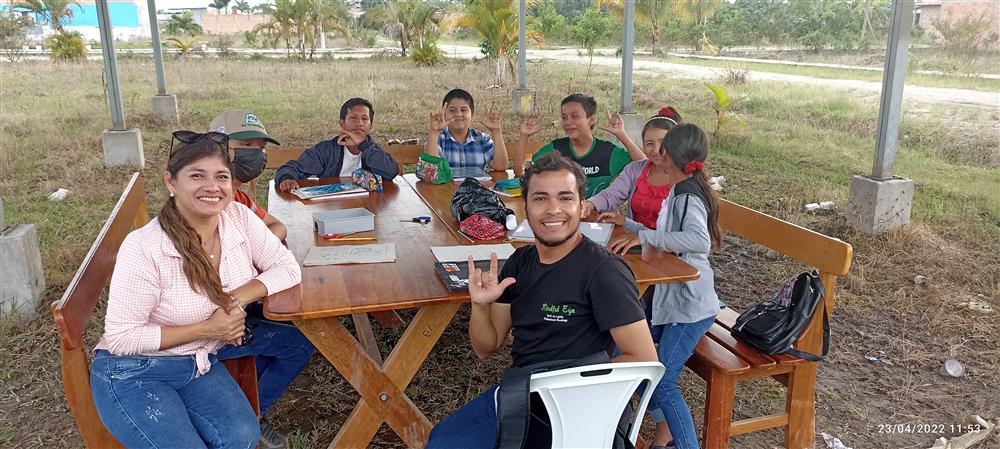Training family groups in remote Amazon villages to use sign language and to replicate it
- Solution
- Peruvian Sign Language for disadvantaged deaf people
- Country of Implementation
- Peru
- Start Year
- 2012
- First published
- 03.12.2023

Solution details
“Through the learning of sign language, the communicative skills and competencies of deaf people have been strengthened. ” Leonor Milagros Sovero Habich, Director of Disability Programmes, Paz y Esperanza
In 2012 the Asociación Ministerio Diaconal Paz y Esperanza, a Peruvian NGO, originated a course to teach Peruvian Sign Language as the first language and written Spanish as the second language to families with deaf children in Nueva Cajamarca, a village in the Amazon rainforest region. The courses take place three times a week and cover topics from basic sign language to communicating in daily situations as well academic disciplines such as mathematics, geography, and history. The courses also develop an understanding of deaf culture for the students and their families.
Problems Targeted
In remote regions of Peru the lack of bilingual schools for hearing-impaired children prevents them from exercising their basic rights, such as learning, working, and socializing.
Solution, Innovation and Impact
Founded in Peru in 1996, P az y Esperanza is a human rights organization inspired by Christian principles and values. Since then it has evolved into a community of independent organizations in Peru, Bolivia and Ecuador, with sister organizations in the United States and United Kingdom. Paz y Esperanza’s work focuses on people living in extreme poverty and/or affected by violence and injustice, especially children, women, and people with disabilities. In 2020 the organization launched a project in the San Martin region of the Amazon to provide hearing-impaired children the opportunity to learn Peruvian Sign Language as a first language and Spanish as a second language. The process was initiated by enlisting a deaf community from the Peruvian coast to share their experiences in the Amazon. The 40-minute classes take place three times a week using a curriculum is based on the experience of Peru’s Beethoven School for the Deaf. Starting with four families, the group of participants grew to more than 50 families. As the area has a migrant population, the number of deaf people who have gone through the learning process has increased to more than 150 since 2020. In 2023 the project had 60 participants, including both children and adults.
Funding, Outlook and Transferability
The low-cost service is funded by families, local communities, and the education sector. A local community, once established, should then take over to lead further expansion and replication in other places. In this way the project will reach other less accessible areas in Peru, such as the Andes and other areas of the Amazon. (Awardee 2024)
Media
Pictures
Related information
- Connections
- 1
-
People